Indian Society and Social Issues: August 2024 UPSC Current Affairs | Sociology Optional for UPSC (Notes) PDF Download
International Day of Indigenous Peoples
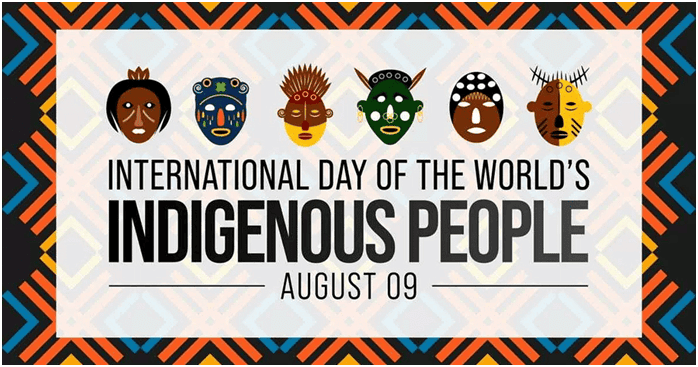
Why in news?
Recently, International Day of Indigenous Peoples was observed on 9th August to promote advocacy for Indigenous rights. Additionally, the Indian Institute of Science (IISc), Bengaluru, has been designated to train tribal students in Semiconductor Fabrication & Characterization Training as part of the Tribal Research Information, Education, Communication, and Events (TRI-ECE).
What is International Day of Indigenous Peoples?
- This day is celebrated annually, following the UN General Assembly's recognition of it in December 1994.
- The observance acknowledges the first meeting of the United Nations Working Group on Indigenous Populations held in Geneva in 1982.
- The theme for 2024 is: "Protecting the Rights of Indigenous Peoples in Voluntary Isolation and Initial Contact."
Key Facts Related to Indigenous Peoples Globally:
- Approximately 200 groups of Indigenous Peoples currently live in voluntary isolation across countries such as Bolivia, Brazil, Colombia, Ecuador, and India.
- There are an estimated 476 million Indigenous Peoples worldwide, spread across 90 countries.
- They represent less than 6% of the global population but account for at least 15% of those living in poverty.
- Indigenous communities speak a significant majority of the world’s estimated 7,000 languages and embody about 5,000 different cultures.
What are Key Facts Related to Tribals in India?
- In India, 'Adivasi' is a term used to collectively describe various ethnic and tribal communities regarded as the country's aboriginal population.
- According to the 2011 census, these groups constitute approximately 8.6% of India's total population, amounting to around 104 million individuals.
Essential Characteristics:
- Indication of Primitive Traits
- Distinctive Culture
- Shyness of Contact with the Broader Community
- Geographical Isolation
- Socioeconomic Backwardness
- Scheduled Tribes (STs) in India include various indigenous communities recognized by the government for special protection and assistance.
Basic Safeguards Provided by the Indian Constitution for STs
Educational & Cultural Safeguards:
- Article 15(4): Special provisions for the advancement of other backward classes, including STs.
- Article 29: Protection of the interests of minorities, which includes STs.
- Article 46: The State must promote, with particular attention, the educational and economic interests of weaker sections, including Scheduled Castes and Scheduled Tribes, while safeguarding them from social injustice and exploitation.
- Article 350: Right to preserve distinct languages, scripts, or cultures.
Political Safeguards:
- Article 330: Reservation of seats for STs in the Lok Sabha.
- Article 332: Reservation of seats for STs in State Legislatures.
- Article 243: Reservation of seats in Panchayats.
Administrative Safeguards:
- Article 275 provides for special grants from the Union Government to State Governments for promoting the welfare of Scheduled Tribes and improving their administration.
What is Semiconductor Fabrication & Characterization Training for Students from Tribal Community Project?
This project aims to provide specialized training to tribal students, enhancing their advanced technological skills.
Objective:
- It seeks to deliver 2100 NSQF-certified level 6.0 & 6.5 training in semiconductor technology to tribal students over three years.
- NSQF Level 6.0 generally aligns with a Bachelor's degree or equivalent, while NSQF Level 6.5 represents a specialized skill set or advanced diploma beyond a Bachelor's degree.
Training Structure:
- Basic training will be offered to 1,500 tribal students, with 600 selected for advanced training.
- Eligible applicants must possess a degree in an engineering discipline.
Buddhadeb Bhattacharjee and Communism
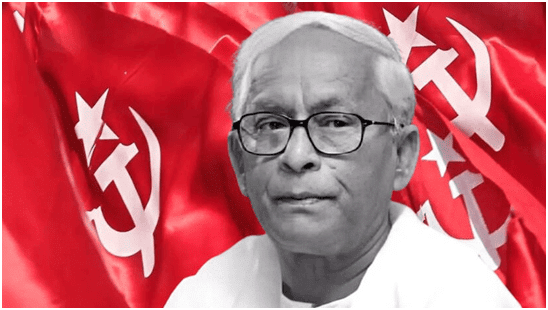
Why in News?
Former West Bengal Chief Minister and prominent communist leader Buddhadeb Bhattacharjee (1944-2024) recently passed away in Kolkata. He served as the Chief Minister from 2000 to 2011, a period characterized by efforts toward industrialization, despite his communist affiliations.
Who was Buddhadeb Bhattacharjee?
- Buddhadeb Bhattacharjee became the Chief Minister of West Bengal, succeeding Jyoti Basu.
- He led the Communist Party of India (Marxist) to victory in the 2001 and 2006 elections.
- His tenure ended in 2011 when the Trinamool Congress ended the Left Front's 34-year governance.
Regime and Policies:
- His administration adopted a more business-friendly approach compared to traditional communist policies.
- Bhattacharjee was instrumental in the proposal for establishing a Tata Nano plant in Singur and the planning of a special economic zone in Nandigram.
- These projects faced significant opposition, particularly over land acquisition issues, leading to their eventual abandonment.
- Under his leadership, West Bengal attracted investments in the IT sector and IT-enabled services.
Awards:
- In 2022, the central government awarded him the Padma Bhushan, which he declined due to Marxist principles against accepting such honors.
Death:
- Buddhadeb Bhattacharjee suffered from chronic obstructive pulmonary disease, and his body was donated to NRS Medical College and Hospital in Kolkata for research purposes.
What is Communism?
- Communism is an economic ideology rooted in the ideas of Karl Marx, promoting a classless society with collective ownership of property and wealth.
- Marx articulated his vision in "The Communist Manifesto" (1848), arguing that capitalism fosters inequality and exploitation, benefitting a wealthy minority at the expense of the working class (proletariat).
- His objective was to create a society where labor is voluntary, and wealth is equitably shared.
- Marx believed that state control of the economy would abolish class distinctions.
- Historically, communism had profound impacts in the Soviet Union and China; the Soviet Union collapsed in 1991 yet adapted its economy post-collapse.
- The communist economic model aims to eliminate private ownership, establishing a command economy where the state dictates production levels and pricing.
- The ideology seeks to dismantle capitalism, which Marx critiqued for exploiting the proletariat and misrepresenting their interests in governance.
What is the History and Impact of Communism in India?
- The Communist Party of India (CPI) was established on October 17, 1920, in Tashkent, with contributions from revolutionaries like MN Roy.
- An open conference in Kanpur in December 1925 solidified the formation of the CPI in Bombay.
- Communist ideologies influenced the Indian National Congress, leading to a more assertive opposition to British colonial rule, marked by events such as the Meerut Conspiracy Case (1929-1933).
- During the Bengal Famine of 1943, communists orchestrated relief efforts.
- Post-World War II, there was a rise in labor movements and peasant uprisings, including the Royal Indian Navy mutiny of 1946.
- The Tebhaga Movement was a notable peasant agitation in Bengal, advocating for improved sharecropping rights and promoting Hindu-Muslim unity.
- The Telangana Movement (1946-1951) targeted feudal exploitation and sought land redistribution.
- After independence in 1947, the CPI emerged as the largest opposition party in the first Lok Sabha (1952-57).
- In 1957, the CPI won elections in Kerala, making it the first state in independent India to democratically elect a communist government.
- A split in the communist movement occurred in 1964, leading to the formation of the Communist Party of India (Marxist) (CPI-M), as some members sought to collaborate with left-leaning Congress factions.
- In 1969, another faction, favoring armed struggle akin to Mao Zedong's approach, established the Communist Party of India (Marxist-Leninist) (CPI-ML).
What is Maoism?
- Maoism, developed by Mao Tse Tung in China, advocates for state power acquisition through armed insurgency, mass mobilization, and strategic alliances.
- Mao's strategy, termed the "Protracted People's War," emphasizes military action to seize power.
- The core of Maoist ideology involves violence and armed insurrection as essential components for governmental control.
- The Maoist doctrine asserts that "bearing arms is non-negotiable," with militants trained to instill fear through extreme violence.
Maoists' Influence in India:
- The Communist Party of India (Maoist), established in 2004 from the merger of CPI (Marxist-Leninist) People's War Group and the Maoist Communist Centre of India (MCCI), is the most significant and violent Maoist entity in India.
- This party and its affiliated organizations are listed as banned terrorist groups under the Unlawful Activities (Prevention) Act, 1967.
- The front organizations are offshoots of the main Maoist party, operating under separate identities to evade legal repercussions.
What is the Difference Between Marxism and Maoism?
- Focus of Revolution: Marxism centers on urban worker revolutions, while Maoism emphasizes the rural peasantry.
- View on Industrialization: Marxism advocates for industrialization as a path to economic strength; Maoism values agriculture equally in economic considerations.
- Driving Force of Social Change: Marxism attributes social changes to economic factors, whereas Maoism focuses on the potential for human nature to be reshaped through willpower.
- Influence of Economy on Society: Marxism posits that societal events are intrinsically linked to economic conditions, while Maoism argues that societal events stem from human will and decisions.
Conclusion
- Communism has played a significant and intricate role in India's political and social history, influencing various aspects of governance and society.
- Leaders like Buddhadeb Bhattacharjee were crucial in shaping policies in West Bengal, where communist ideology was dominant for many years.
- While promoting social justice and workers' rights, the practical application of communism often struggled to balance industrial growth with equity and communal harmony.
Mains Question
Q: Discuss the role of the communist movement in pre and post-independent India. How did they help strengthen Indian democracy by voicing the concerns of vulnerable sections?
Gender Eligibility Row at Paris Olympics 2024
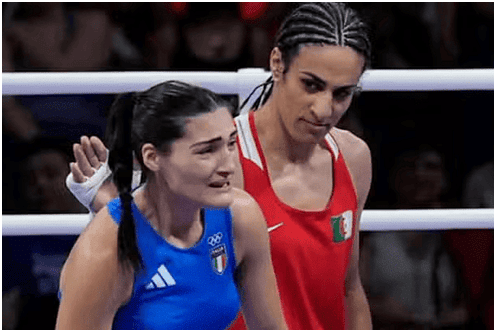
Why in News?
The recent boxing match between Algeria’s Imane Khelif and Italy’s Angela Carini has ignited a significant controversy, particularly concerning gender and eligibility in women’s sports.
Why did Imane Khelif’s Win Spark a Controversy?
Background of the Controversy:
- Khelif's rapid victory has led to accusations from critics who claim she is a “biological man” due to disorders of sex development, despite official confirmation of her female gender identity.
- Critics argue that Khelif possesses an “unfair advantage.”
International Boxing Association’s Stance:
- In 2023, Khelif and another boxer, Lin Yu-ting, were disqualified from competing in the International Boxing Association’s (IBA) World Championship in New Delhi due to a “gender eligibility” test.
- The specifics of this test are confidential; however, both athletes are eligible to compete in the Paris Olympics due to the IBA's derecognition by the International Olympic Committee (IOC) in 2023.
- The IOC's current eligibility criteria rely solely on the gender indicated in an athlete's passport, which identifies Khelif as female.
IOC’s Response:
- The IOC defended its decision, asserting that all competitors in the Olympics have satisfied the eligibility criteria.
- It criticized the IBA's decision as “arbitrary” and expressed concern over the abuse directed at Khelif and Lin Yu-ting, highlighting the spread of misleading information.
Why is Gender Eligibility a Contentious Issue in Women’s Sports?
Sex and Athletic Performance:
- Sports are typically categorized by sex due to physiological differences; men generally have advantages in muscle mass, strength, and endurance.
- The SRY gene on the Y chromosome significantly influences testosterone production, which contributes to these athletic advantages.
- Research, including a 2017 study in Endocrine Reviews, indicates that testosterone levels are crucial in explaining performance disparities between sexes.
Disorders of Sex Development (DSDs):
- Individuals with female reproductive systems may possess XY chromosomes due to conditions like Swyer syndrome, complicating discussions around gender eligibility.
- There is ongoing debate about whether athletes with DSDs should be barred from women’s sports to maintain fair competition, given their potential for elevated testosterone levels and associated advantages.
What are Disorders of Sexual Development (DSDs)?
Definition:
- DSDs refer to a range of conditions where individuals may exhibit physical characteristics of both sexes or have atypical sexual development. These differences may be apparent at birth, puberty, or later in life.
Examples:
- Individuals with XY chromosomes but female-appearing genitals.
- Individuals with XX chromosomes who appear male.
- Individuals possessing both ovarian and testicular tissue.
- Individuals with typical sex organs but abnormal chromosomal arrangements affecting growth and development.
Types of DSDs:
- Androgen Insensitivity Syndrome (AIS): A genetic condition in which an individual with XY chromosomes is resistant to male hormones, leading to the development of female physical traits despite possessing male genetic makeup.
- Klinefelter Syndrome: A chromosomal condition in males characterized by an extra X chromosome (XXY), resulting in symptoms such as reduced testosterone levels, infertility, and various developmental differences.
- Turner Syndrome: A chromosomal disorder in females caused by the complete or partial absence of one X chromosome, which results in short stature, infertility, and various physical and developmental abnormalities.
How do Sports Federations Address Gender Eligibility?
IOC’s Approach:
- Since 2021, the IOC has permitted international sports federations to create their own eligibility regulations based on an “evidence-based approach” that seeks to balance fairness, inclusion, and non-discrimination.
- Previously, testosterone levels were a primary determinant for eligibility, but recent policies emphasize gender as indicated in official documents.
Specific Regulations by Federations:
- World Athletics continues to use testosterone levels as a criterion for athletes with DSDs, requiring them to maintain levels below 2.5 nmol/L for at least 24 months.
- Other sports organizations, such as FINA, the International Cycling Union, and the International Rugby Union, have implemented varying bans on trans women athletes based on testosterone levels, although the necessity of such bans has been questioned considering the diverse skill sets required across different sports.
Open Category Debate:
- Some propose an “open category” for trans athletes to address these issues. However, the practicality of such a category is debated due to the limited number of elite-level trans athletes and the challenges in establishing fair competition standards.
Way Forward
Biomarkers:
- Identify reliable biomarkers that can accurately assess athletic potential without infringing on athletes' privacy or dignity. A biomarker is an objective measurement capturing the state of a cell or organism at a specific time.
- Conduct longitudinal studies on the effects of puberty blockers, hormone therapy, and other interventions on athletic performance.
Athlete Education:
- Provide athletes with accurate information regarding sex, gender, and eligibility rules to facilitate informed decision-making.
Transparent and Inclusive Policies:
- Sports federations should create transparent and inclusive policies that balance fairness, inclusion, and non-discrimination, including clear eligibility criteria and the rationale behind them.
Collaboration Among Federations:
- International sports federations should work together to harmonize their policies and ensure consistency across different sports, helping to prevent confusion and ensure fair competition.
Respect for Human Rights:
- Prioritize the protection of human rights, including the right to participate in sports without discrimination.
Mains Question
Q: Discuss the challenges and ethical considerations associated with gender eligibility in sports. How do these issues impact fairness and inclusivity?
NOTTO Annual Report 2023-24
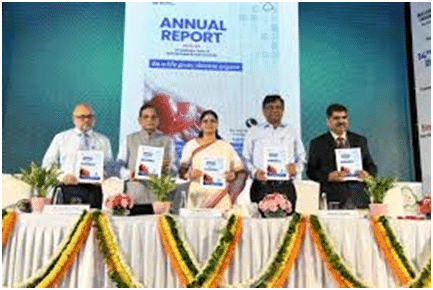
Why in news?
The National Organ and Tissue Transplant Organisation (NOTTO) published its annual report for the year 2023-24 on Indian Organ Donation Day (IODD) on August 3, 2024. This year marked a significant achievement for India as it surpassed 1,000 deceased organ donors in a single year, breaking the previous record set in 2022.
Key Highlights of the Report
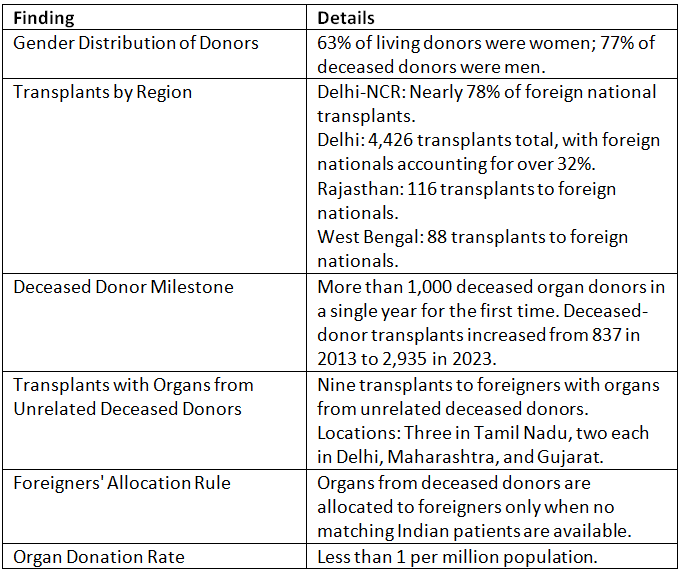
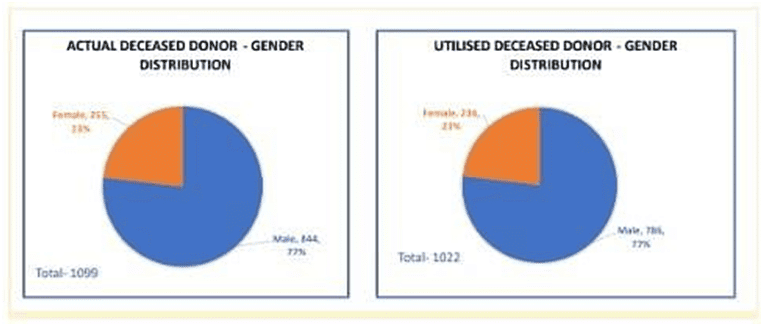
Regulatory Framework Related to the Organ Transplantation in India
- Transplantation of Human Organs and Tissues Act, 1994 (THOTA): This act regulates organ donation and transplantation in India and was amended in 2011. It allows for organ donations from deceased individuals or altruistic donations from distant relatives, in-laws, or long-term friends, with strict checks to prevent financial exchanges.
- Unrelated Donors: Must provide documentation to prove a long-term connection with the recipient.
- Legal Consequences: Offenses related to organ trafficking can lead to up to 10 years in prison and fines up to Rs 1 crore.
- Brain Stem Death: Recognized legally since 1994.
- National Organ and Tissue Transplant Organisation (NOTTO): Established as the apex organization for organ procurement and distribution at the national level.
National Organ Transplantation Guidelines
- Removed Age Cap: The previous upper age limit for organ recipients has been lifted, acknowledging that people are living longer.
- No Domicile Requirement: Patients can now register for organ transplants in any state, promoting a 'One Nation, One Policy' approach.
- No Fees for Registration: States are instructed to eliminate registration fees for organ recipients.
- Organ Transport Policy: A uniform policy has been finalized to expedite the transport of live organs, developed with inputs from various ministries.
Ethical Concerns Related to Organ Donation and Transplantation
Living Persons:
- Violates Traditional Medical Ethics: Kidney donors may face health complications, conflicting with the principle of 'do no harm.'
- Potential for Trafficking: Organ donation can be vulnerable to illegal activities during procurement and transplantation.
- Emotional Coercion: Family ties may pressure living related donors to contribute, raising ethical concerns about voluntary consent.
Deceased Persons:
- Consent and Autonomy: Determining whether an individual had expressed a desire to donate their organs can be ethically challenging.
- Allocation and Fairness: Disparities in access to transplantation based on wealth and location can raise ethical issues.
- Transparency and Public Trust: Ethical concerns regarding the management of organ donation registries and transplantation practices need addressing.
Challenges in Organ Transplantation
- Donor Organ Supply: The demand for organ donations significantly exceeds supply, with around 1.8 lakh persons suffering from renal failure annually, but only about 6,000 renal transplants performed.
- Peri-Transplant Donor Tissue Damage: Aging and diseases can diminish organ quality, leading to issues like Ischemia-Reperfusion Injury (IRI) that affect transplant success.
- Outdated Preservation Techniques: Many hospitals still use traditional preservation methods, lacking access to advanced technologies that improve organ viability.
- Chronic Rejection in Organ Transplantation: Long-term survival rates have seen little improvement due to unchanged anti-rejection therapies.
- Lack of Awareness: There is a significant lack of public knowledge regarding organ donation, including the concept of brain stem death.
Way Forward
- Strengthen Organ Donation and Awareness Programs: Launch campaigns to educate the public on the importance of organ donation.
- Integrate Education into School Curricula: Foster a culture of organ donation from a young age through educational programs.
- Enhance Infrastructure and Facilities: Implement advanced organ preservation techniques and standardized protocols for organ handling.
- Advance Research and Innovation: Explore new technologies such as bioengineered organs and xenotransplantation.
- Foster Ethical and Regulatory Frameworks: Develop guidelines addressing consent, equity, and access to organ transplantation.
Mains Question:
Q: What are the challenges involved in transplantation of organs in India? How can the organ transplantation rate be improved in India?
Porja, Bagata, and Konda Dora Tribes
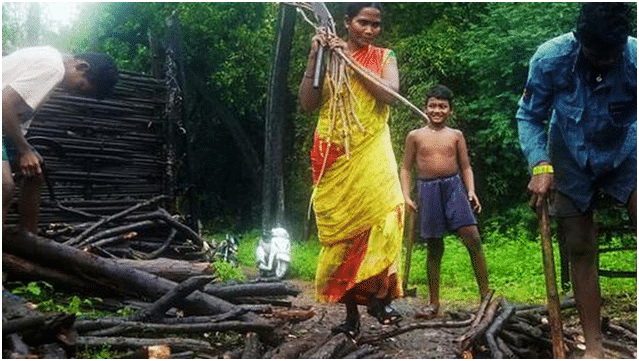
Why in news?
The challenges faced by tribal communities in Andhra Pradesh, particularly the Porja, Bagata, and Konda Dora tribes, have recently come into focus. These communities played a significant role in the construction of the Lower Sileru Hydro-Electric Project (LSP) during the 1970s. However, despite their contributions, they are still struggling with critical shortages of electricity and clean water, particularly in areas near Visakhapatnam.
What are the Key Facts About the Porja, Bagata, and Konda Dora tribes?
Porja Tribe:
- The Porja tribe consists of sub-groups such as Bondo Porja, Khond Porja, and Parangi Porja, and is primarily located in the Visakhapatnam region of Andhra Pradesh.
- According to the 1991 Census, their population was approximately 16,479.
- Historically, the Porjas migrated from Odisha around 300 years ago in search of arable land.
- They were traditionally engaged as palanquin bearers and in various low-status jobs.
- The name "Porja" originates from Oriya terms meaning "son of a king," highlighting their historical ties with the Jeypore rulers.
- They reside in hilly areas and practice a form of agriculture known as shifting cultivation or Podu.
- The Porja society is patriarchal, with inheritance and succession following a patrilineal system, where the eldest son receives a larger share of the inheritance.
- Social customs include cross-cousin marriages, a structured bride price system, and acceptance of both pre-marital and post-marital relationships.
- Tattooing plays an important role in their socio-religious identity.
- Each sub-group has distinct customs, languages, and dietary practices, with the Parangi Porja group being the most notable among them.
Bagata Tribe:
- The Bagata tribe is an indigenous group primarily found in Andhra Pradesh and Odisha, with various names including Bagatha, Bagat, Bagodi, Bogad, and Bhakta.
- They practice lineage exogamy, meaning they typically marry outside their clan.
- Marriage can occur through negotiation or elopement, and both divorce and remarriage are accepted within their culture.
- Traditionally, their diet consisted mainly of various millets, but this has shifted to rice in contemporary times.
- The Bagatha tribe believes in supernatural elements, including magic, witchcraft, and spirits. They worship nature through totems and clan-based rituals.
- Disputes within families and tribes are generally resolved by a traditional tribal headman, while village headmen handle inter-tribal conflicts and breaches of customs.
Konda Dora Tribe:
- The Konda Dora tribe is a Scheduled Tribe in Odisha, residing in the Konda Kamberu ranges of the Eastern Ghats, which extend into southern Odisha and Andhra Pradesh.
- The name "Konda Dora" translates to "Lords of the Hill," derived from "Konda" (hill) and "Dora" (lord), and they regard themselves as descendants of the mythological Pandavas.
- While their original language, Kubi/Konda, is being replaced by a mix of Telugu and Odia, they maintain their cultural identity through distinct settlements.
- Konda Dora communities tend to be homogeneous and live in designated areas within multi-ethnic villages to preserve their cultural and ethnic identity.
- Although polygyny and child marriages are not forbidden, the predominant practices are monogamy and adult marriages.
- They prefer cross-cousin marriages while strictly prohibiting parallel cousin marriages.
- Traditional governance is maintained through a village council known as Kulam Panchayat, led by a Kula Peda and supported by a Pillipudamari.
- In addition, an inter-village community council exists to manage customary affairs within their jurisdiction.
- The tribe is endogamous, divided into two principal groups: Pedda Kondulu and China Kondulu, each comprising numerous clans.
- Modernization and external cultural influences are gradually altering their traditional way of life.
SC Allows for Sub-Classification of SCs and STs
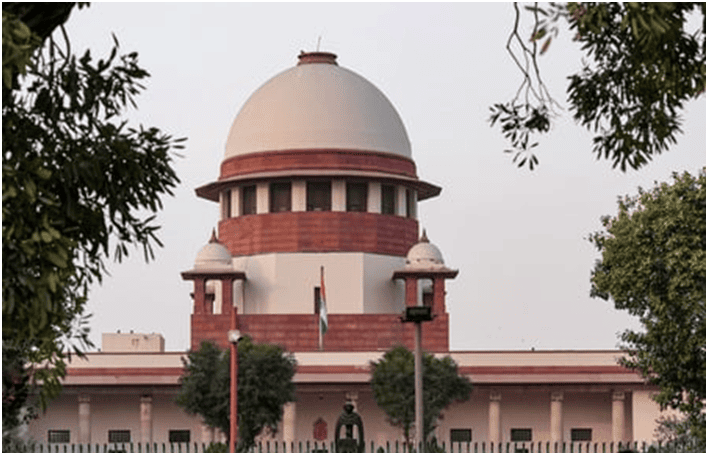
Why in News?
The Supreme Court of India, in a review judgment of the Punjab and Haryana High Court, has made a significant ruling that permits states to sub-classify reserved category groups, specifically Scheduled Castes (SCs) and Scheduled Tribes (STs), for the purpose of reservations. This 6-1 majority decision overturns the previous 2004 ruling in E.V. Chinnaiah vs. State of Andhra Pradesh, fundamentally changing the framework of reservation policies in India.
SC's Verdict on Sub-Classifications of SCs and STs
- Sub-Classifications Permitted: The Court has determined that states can constitutionally sub-classify SCs and STs based on different levels of backwardness.
- The seven-judge Bench stated that states may now sub-classify SCs within the 15% reservation quota to better aid the most disadvantaged groups.
- The Chief Justice of India highlighted the distinction between "sub-classification" and "sub-categorization," warning against using these classifications for political gain instead of genuine upliftment.
- Sub-classification should rely on empirical data and evidence of historical discrimination, rather than arbitrary or politically motivated reasons.
- States must ensure that their sub-classification decisions are based on factual evidence for fairness and effectiveness.
- The Court emphasized that no sub-class can have 100% reservation benefits.
- State decisions regarding sub-classification are subject to judicial review to avoid political misuse.
- The ruling extends the 'creamy layer' principle, previously applicable only to Other Backward Classes (OBCs), to SCs and STs as well.
- This means states need to identify and exclude the creamy layer within SCs and STs from reservation benefits.
- The judgement seeks a more nuanced reservation approach, ensuring that benefits reach truly disadvantaged individuals.
- Reservations are now limited to the first generation; if any family member has utilized reservation benefits to attain a higher status, subsequent generations will not receive them.
Rationale for the Verdict
- The Court recognized that systemic discrimination hinders some SCs and STs from progressing, and sub-classification under Article 14 of the Constitution can help address these inequalities.
- This approach allows states to customize reservation policies to effectively support the most disadvantaged within these groups.
Reference of the Sub-Classification Issue
- The issue was referred to a seven-judge bench by a five-judge bench during the case of State of Punjab v. Davinder Singh in 2020.
Primary reasons for this reference included
- Reconsideration of the E.V. Chinniah Judgment: The five-judge bench found it necessary to reassess the 2004 ruling which prohibited sub-classification within SCs, asserting they formed a homogeneous group.
- The Punjab Scheduled Caste and Backward Classes (Reservation in Services) Act, 2006: This legal challenge focused on the validity of Section 4(5) of the Act, which mandated that a portion of SC vacancies in recruitment be allocated to specific groups.
- High Court Ruling: A division bench of the Punjab and Haryana High Court struck down the provision in 2010, relying on the E.V. Chinniah judgment, ruling that all castes under Article 341(1) are homogeneous and cannot be subdivided.
- The High Court's decision was based on the premise that Article 341 empowers the President to recognize SCs in consultation with the Governor through public notification.
Arguments For and Against Sub-Classification
Arguments For Sub-Classification
- Enhanced Flexibility: It allows governments to design policies that better meet the needs of the most disadvantaged within SC/ST communities.
- Alignment with Social Justice: Proponents believe sub-classification aids in achieving social justice by targeting benefits where they are most needed.
- Constitutional Provisions: Article 16(4) allows reservations for underrepresented backward classes; Article 15(4) supports arrangements for the welfare of SC and STs; Article 342A permits states to maintain lists of backward classes.
Arguments Against Sub-Classification
- Homogeneity of SCs and STs: Critics argue that sub-classification could undermine the recognized uniform status of SCs and STs as a homogeneous group.
- Potential for Inequality: There are concerns that it might create further divisions and exacerbate inequalities within SC communities.
Significance of the Supreme Court Verdict
- Overruling Previous Judgement: The Supreme Court's ruling reverses the previous stance that SCs and STs were homogeneous, allowing states to sub-classify them for reservation purposes without violating Articles 14 or 341 of the Constitution.
- Impact on State Laws: The ruling supports various state laws previously invalidated, enabling states to create sub-categories within SC and ST groups.
- Future of Reservations: States will be empowered to implement sub-classification, leading to more effective reservation strategies, setting a new precedent for how reservations can be managed across India.
Challenges for Sub-Classification
- Data Collection and Evidence: Accurate data on socio-economic conditions of various sub-groups is essential for justifying sub-classification decisions.
- Ensuring accurate data while avoiding biases can be challenging.
- Balancing Interests: While sub-classification aims to uplift the disadvantaged, balancing interests can be complex.
- Uniformity vs. Diversity: Tailoring policies may lead to variations across states, requiring a balance between uniformity and local needs.
- Political Resistance: Sub-classification may face opposition, leading to delays and disputes.
- Social Tensions: This could intensify existing social tensions within SC/ST communities, resulting in conflicts.
- Administrative Burden: Creating and managing sub-categories may increase the administrative workload for government agencies.
Way Forward
- Consider historical discrimination, economic disparities, and social factors in developing sub-classification criteria.
- Avoid political motivations and prioritize fairness in sub-classification.
- Utilize the upcoming Census for comprehensive data on SCs and STs, focusing on sub-group specifics.
- Establish independent verification processes for data credibility and transparency.
- Define clear, objective criteria for sub-classification, emphasizing socio-economic indicators over caste affiliations.
- Monitor impacts and adjust policies based on outcomes to ensure benefits reach intended recipients.
- Recognize sub-classification as a temporary measure aimed at addressing historical disadvantages and focus on overall socio-economic development of SCs and STs.
- Gradually reduce dependency on reservations as broader social and economic conditions improve.
Mains Question
Q: Analyze the significance of the Supreme Court's ruling allowing sub-classification of Scheduled Castes and Scheduled Tribes for reservations. What are the potential impacts on social justice in India?
Lyme disease
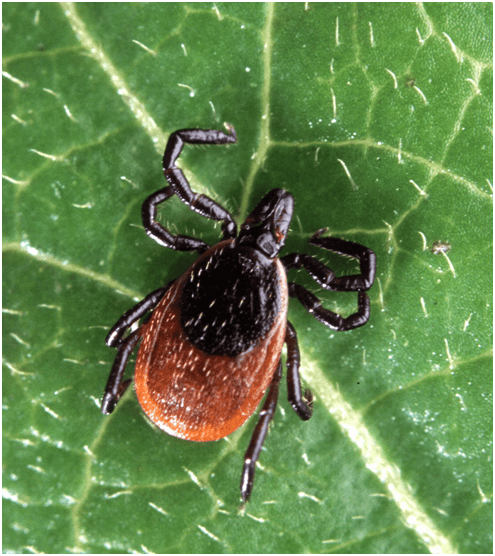
A recent case of Lyme disease has emerged in Koovapady, located in the Ernakulam district of Kerala.
About
This condition is a bacterial infection caused by the Borrelia species of bacteria.
Transmission
- The disease is transmitted when a person is bitten by an infected tick, specifically the black-legged tick.
- These ticks, also referred to as deer ticks, can transfer the Lyme disease bacteria while feeding on the host's blood.
- It is important to note that not every black-legged tick is a carrier of the Lyme bacteria.
Naming of the Disease
The name "Lyme disease" originates from a city in the United States where the disease was first identified.
Prevention
Avoiding areas where ticks are prevalent is the most effective way to prevent infection.
Treatment
Commonly prescribed antibiotics for treating Lyme disease include doxycycline, amoxicillin, and cefuroxime.
Vaccine
Currently, there is no vaccine available for humans, although vaccinations do exist for dogs.
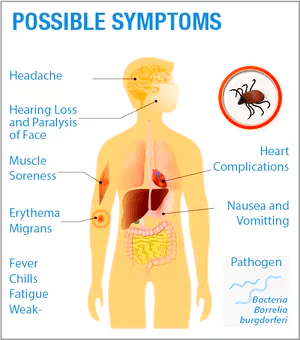
Unified Pension Scheme
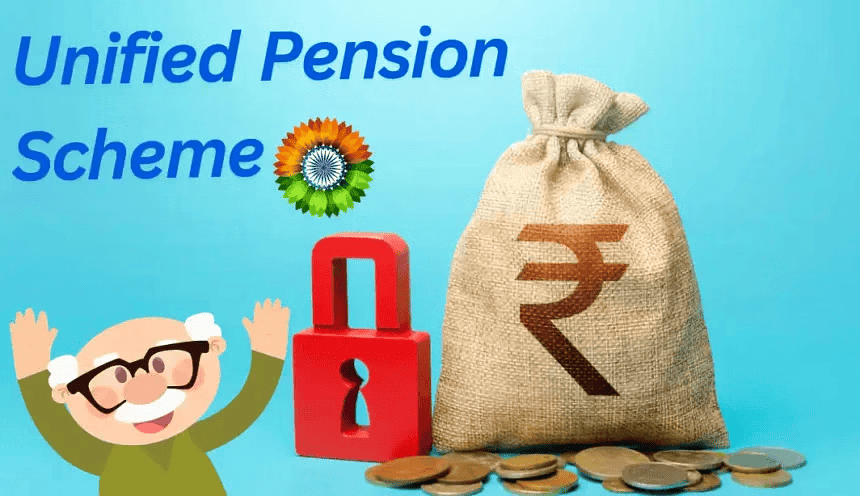
Why in news?
The Union Cabinet has ratified the Unified Pension Scheme (UPS), which guarantees government employees a pension post-retirement. The scheme will commence on April 1, 2025, allowing central government employees to transition from the existing National Pension System (NPS). State governments will also have the choice to implement the Unified Pension Scheme.
Provisions of the Unified Pension Scheme
- Assured Pension: Employees will receive a pension amounting to 50% of their average basic pay over the last 12 months before retirement, contingent upon a minimum service period of 25 years. If the service period is shorter, the pension will be proportionately reduced, with a minimum of 10 years of service required.
- Assured Minimum Pension: For individuals retiring after a minimum of 10 years of service, the UPS guarantees a minimum pension of Rs 10,000 per month.
- Assured Family Pension: In the event of a retiree's death, their immediate family will be entitled to receive 60% of the pension last drawn by the retiree.
- Inflation Indexation: Dearness relief will be applied to the three types of pensions mentioned, calculated based on the All India Consumer Price Index for Industrial Workers.
- Lump Sum Payment at Retirement: In addition to gratuity, employees will be entitled to a lump sum payment at retirement, equating to 1/10th of their monthly earnings (salary + DA) for every six months of completed service. This lump sum will not diminish the assured pension amount.
- Choice for Employees: Employees have the option to continue under the NPS. However, this choice can only be made once, and cannot be reversed.
Key Differences between UPS, Old Pension Scheme (OPS), and National Pension Scheme (NPS)
- Pension Calculation Method: Under OPS, the pension was fixed at 50% of the last base salary plus dearness allowance (DA). In contrast, the UPS calculates pension as the average of the basic salary plus DA drawn in the last year before retirement, which may result in a slightly lower pension if an employee receives a promotion just before retirement.
- Employee Contribution: OPS did not require employee contributions, while under NPS, employees contribute 10%, with an additional 18.5% contributed by the government. The government employee's basic salary is also subjected to a 14% contribution.
- Tax Benefits: Central government employees can avail tax benefits for the government's contribution to the NPS as specified in the Income Tax Act, 1961. The government has not clarified whether employee and government contributions under UPS will qualify for tax benefits.
- Higher Minimum Pension in UPS: The UPS provides a higher minimum monthly pension of Rs 10,000 after a minimum service of 10 years, compared to the current minimum of Rs 9,000 under the OPS.
- Lump Sum Payments: The OPS allowed for the commutation of up to 40% of the pension into a lump sum, affecting the monthly pension amount. The UPS, however, provides a lump sum at retirement calculated as one-tenth of the monthly salary plus DA for every six months of service, without impacting the pension amount.
What is NPS?
- About: The NPS is a market-linked contribution scheme initiated by the Central Government to support individuals in securing income for retirement. It replaced the OPS in January 2004 as part of pension policy reforms in India, regulated by the Pension Fund Regulatory and Development Authority (PFRDA) under the PFRDA Act, 2013.
- Need for NPS: The OPS had a fundamental flaw as it was unfunded, lacking a dedicated corpus for pensions. This situation caused the government's pension liabilities to escalate to unsustainable levels, increasing from Rs 3,272 crore in 1990-91 to Rs 1,90,886 crore in 2020-21.
- Working of NPS: The NPS differs from OPS primarily in two respects: it does not guarantee a fixed pension and is funded by the employee and government contributions, with employees contributing 10% of their basic pay and DA, while the government contributes 14%.
- Opposition to NPS: Employees under NPS receive lower guaranteed returns and must contribute towards their pensions, unlike the OPS, which offered no employee contributions and higher guaranteed returns. Due to persistent demands for a return to OPS, a committee led by T V Somanathan was established by the union government in 2023, resulting in the introduction of the UPS.
Fiscal Implications of UPS
- Large Debt-to-GDP Ratio: The implementation of UPS is expected to have considerable fiscal consequences for a government with a high debt-to-GDP ratio, potentially straining public finances.
- High Fiscal Burden: A September 2023 Reserve Bank of India study indicated that if all states transitioned back to OPS, the fiscal burden could rise to 4.5 times that of the NPS, potentially reaching 0.9% of GDP annually by 2060. Concerns have been raised regarding how this would affect Union finances, given its similarity to the OPS.
Conclusion
The UPS is designed to balance fiscal costs with the aspirations of employees. It aims to address the uncertainties associated with pensions and the potential fiscal burden of reverting to the OPS. By integrating elements of both the OPS (defined benefit) and NPS (contributory), the UPS provides assured returns on the pension pool while minimizing market risk. With guaranteed returns and inflation protection, the UPS is anticipated to enhance the overall pension fund, thereby alleviating some of the risks linked to debt burdens.
Mains Question
Q: Explain the key Differences between Unified Pension Scheme (UPS), Old Pension Scheme (OPS) and National Pension Scheme (NPS). How UPS seeks to mitigate the risks associated with NPS?
Rashtriya Vigyan Puraskar

Why in news?
The Indian government has announced the inaugural Rashtriya Vigyan Puraskar (RVP) awardees for 2024, representing a notable change in how the nation acknowledges scientific accomplishments. The awards ceremony is scheduled for August 23, coinciding with the first National Space Day, to celebrate the successful moon landing of Chandrayaan-3.
Overview of Rashtriya Vigyan Puraskar (RVP)
- The RVP is a prestigious honor aimed at recognizing and promoting significant contributions made by scientists, technologists, and innovators of Indian origin, including Persons of Indian Origin (PIO), whether they are based in India or abroad.
- These awards are designed to celebrate individuals who have made impactful advancements through research, innovation, or discoveries that positively influence Indian communities and society.
- 2024 marks the first introduction of the RVP, which replaces previous science awards, such as the Shanti Swarup Bhatnagar Prize, to create a more inclusive and updated recognition system.
- The RVP awards will be announced annually on May 11, which is celebrated as National Technology Day.
- The award ceremony for all categories will take place on National Space Day.
- The awards are available in multiple categories including Physical Sciences, Chemical Sciences, Biological Sciences, Mathematical Sciences, Earth & Atmospheric Sciences, and Engineering Sciences.
Categories of the Awards
- Vigyan Ratna (VR): Honors lifetime achievements and significant contributions in any science and technology field. Up to three awards are bestowed each year.
- Eligibility: Open to distinguished scientists and technologists with a career marked by significant achievements.
- Vigyan Shri (VS): Recognizes outstanding contributions in any area of science and technology. Up to 25 awards may be given to individuals with notable achievements in their fields.
- Vigyan Yuva-Shanti Swarup Bhatnagar (VY-SSB): Aims to encourage young scientists under the age of 45 who have made exceptional contributions. This is intended for young scientists demonstrating remarkable research or innovation.
- Vigyan Team (VT): Awarded to teams of three or more scientists, researchers, or innovators for exceptional collaborative achievements in any science and technology field.
Benefits of the Award
- Each recipient receives a Sanad (Certificate) signed by the President of India.
- A brochure featuring the citation and photograph of the awardees is published on the day of the ceremony. In cases of posthumous awards, decorations are presented to the next of kin.
Key Awardees of the 2024 Rashtriya Vigyan Puraskar
- Vigyan Ratna: G. Padmanabhan, recognized for his lifetime contributions to biological sciences, especially for his research on malaria parasites. He is a former director of the Indian Institute of Science and has received the Padma Shri and Padma Bhushan awards.
- Vigyan Team: The Chandrayaan-3 Team received the Vigyan Team award for their successful mission landing India's first spacecraft on the Moon in 2023, marking a significant achievement in India's space exploration.
- Vigyan Shri: Awardees include Annapurni Subramaniam (for research on the formation and evolution of star clusters and galaxies), Jayant Bhalchandra Udgaonkar (in biology), and Naba Kumar Mondal (in particle physics).
- Vigyan Yuva: Awardees include Vivek Polshettiwar (for advancements in carbon capture technologies), Urbasi Sinha (in quantum research), and Roxy Mathew Koll (in climate science).
Reducing Work Hours of Women
The recent tragic event involving the murder of a female doctor at Kolkata's R.G. Kar Hospital on August 9 has prompted a wave of public outcry and governmental response. The West Bengal government has introduced guidelines aimed at enhancing the safety of women in the workplace, notably suggesting the reduction of night shifts for female employees.
- These developments are significant in the broader context of GS2 concerning welfare schemes aimed at vulnerable populations and the overall management of social services.
Women in Workforce
- An analysis of the Periodic Labour Force Survey (PLFS) by the National Statistical Office (NSO) revealed that the Worker Population Ratio (WPR) for women aged 15 and older was 28.7% in 2019-20.
- The latest PLFS data shows a positive trend in the Labour Force Participation Rate (LFPR) for women, which increased to 32.8% in 2021-22.
- Despite this rise, the female LFPR remains significantly lower than the global average of 47% and that of countries like China, where it stands at 60%.
- Comparatively, female LFPRs in neighboring South Asian nations, such as Sri Lanka and Bangladesh, are also higher.
Avoiding Night Duty - A Regressive Approach
- The directive suggesting that night shifts for women be minimized raises questions about its effectiveness in ensuring workplace safety.
- This approach risks further marginalizing women in the workforce rather than addressing the root causes of workplace violence.
- As per the April-June 2024 PLFS report, urban women's labor force participation rate is a concerning 25.2%.
- Reducing work hours could lead to job losses and diminish women's financial independence.
- Additional guidelines, part of the 'Rattirer Shaathi (Helpers of the Night)' initiative, propose separate restrooms for women and the establishment of safe zones equipped with CCTVs, as well as a dedicated mobile app for safety.
Existing Notifications on the Issue
- States like Telangana, Madhya Pradesh, and Tamil Nadu have allowed commercial entities to employ women during night shifts under certain conditions.
- Haryana has revised regulations for commercial establishments that intend to employ women at night.
- Other states, including Himachal Pradesh, Odisha, Andhra Pradesh, and Uttar Pradesh, have issued exemptions to the application of Section 66(1)(b) of the Factories Act, 1948.
- Critics argue that prohibiting women from night shifts limits their opportunities compared to their male counterparts.
- Legal precedents suggest that employers cannot deny female applicants jobs based on the requirement for night work, in line with a 1999 Madras High Court ruling declaring certain restrictions unconstitutional.
- Continued notification of permissions for women to work night shifts is essential to promote workplace inclusivity.
Way Forward
- In response to the Kolkata incident, the Supreme Court has taken suo motu cognizance and established a national task force to enhance the safety of medical professionals.
- Gender violence remains a pressing issue, especially in the informal sector where many women work.
- Despite reforms following the 2012 Delhi rape case, including stricter laws and punishments, significant challenges persist.
- The National Crime Records Bureau (NCRB) reported 4.45 lakh cases of crimes against women in 2022, averaging nearly 51 FIRs per hour.
- Chief Justice D.Y. Chandrachud emphasized the need for protocols to be actionable and not merely theoretical.
- In 2017, Justice R. Banumathi highlighted that beyond legal measures, a societal mindset shift and increased awareness of gender justice are crucial in fighting violence against women.
Conclusion
The campaigns led by women to "reclaim the night" following the incident at R.G. Kar Hospital serve as a critical reminder for both government and society to take substantive actions towards ensuring women's rights and safety.
|
112 videos|390 docs
|





















